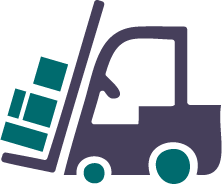Heavy Mechanical and Engineering
Structure: 8 sections with a quiz each, followed by “Spot the Hazard” simulation exercise.
Passing requirement: 100% with unlimited tries
Timing: Estimated learning time – 26 to 30 minutes
Structure: 8 sections with a quiz each, followed by “Spot the Hazard” simulation exercise.
Passing requirement: 100% with unlimited tries
Timing: Estimated learning time – 26 to 30 minutes
Structure: 8 sections with a quiz each, followed by “Spot the Hazard” simulation exercise.
Passing requirement: 100% with unlimited tries
Timing: Estimated learning time – 26 to 30 minutes
Working in environments dealing with heavy equipment is dangerous. Young workers (aged between 15 and 24) often injure themselves in this industry.
- cutting, pressing and fabricating steel and aluminium
- welding, grinding and casting materials
- constructing, assembling, installing, modifying, repairing and maintaining machines
- making parts, equipment, machines, instruments and tools.
Be aware!
16%
of work-related injuries in this industry happened to young workers.
- cutting, pressing and fabricating steel and aluminium
- welding, grinding and casting materials
- constructing, assembling, installing, modifying, repairing and maintaining machines
- making parts, equipment, machines, instruments and tools.
Be aware!
14%
of work-related injuries in this industry happened to young workers.
Top incident causing injuries were from:
Other hazardous areas to look out for:

Welding

Working with forklift

Contact with a chemical or hazardous substance

Noise

Electrical safety

Welding

Working with forklift

Contact with a chemical or hazardous substance

Noise

Electrical safety

Welding

Working with forklift

Contact with a chemical or hazardous substance

Noise

Electrical safety
Source: WorkCover WA (2024). Workers’ compensation Western Australian claims data 2018-19 to 2022-23p
Note: Calculation based on a five-year total from 2018-19 to 2022-23p. Based on the percentage of all incidents, the combination of all injuries is not equal to 100%
Injuries are measured by number of LTI/Ds (1+days/shifts lost)
SmartMove heavy mechanical and engineering industries are classified under ANZSIC 2006 – Subdivisions 21, 22, 24
Source: WorkCover WA (2022). Workers’ compensation Western Australian claims data 2016-17 to 2020-21p
Note: Calculation based on a five-year total from 2016-17 to 2020-21p. Based on the percentage of all incidents, the combination of all injuries is not equal to 100%
Injuries are measured by number of LTI/Ds (1+days/shifts lost)
SmartMove heavy mechanical and engineering industries are classified under ANZSIC 2006 – Subdivisions 21, 22 and 24


